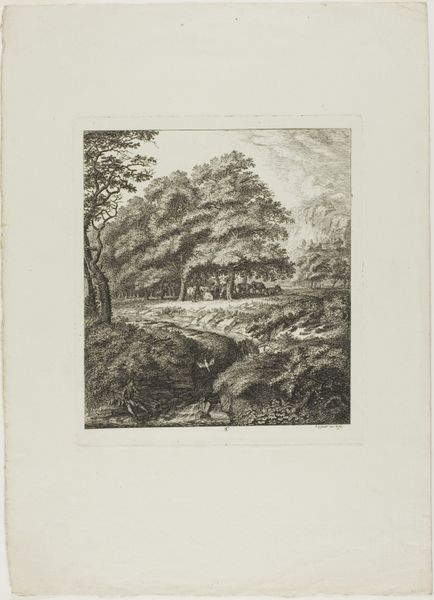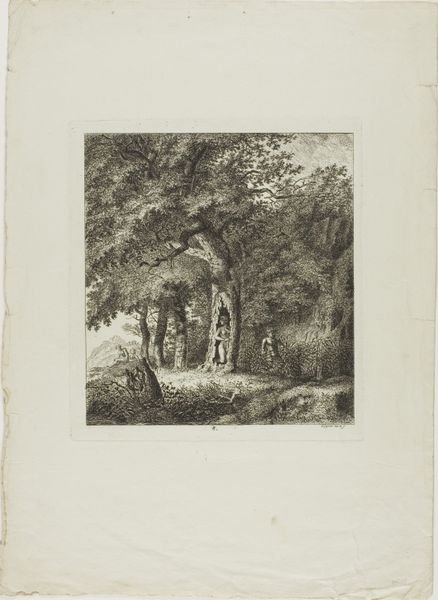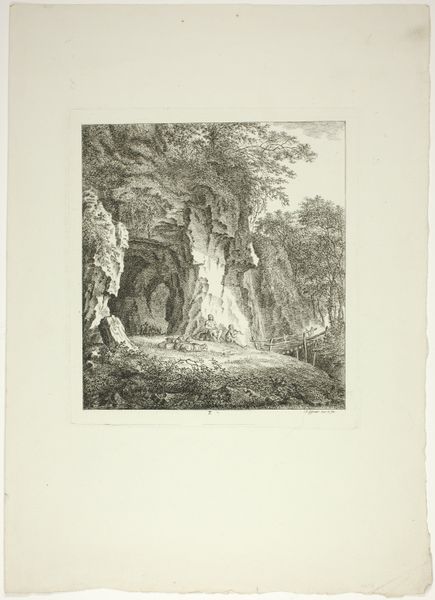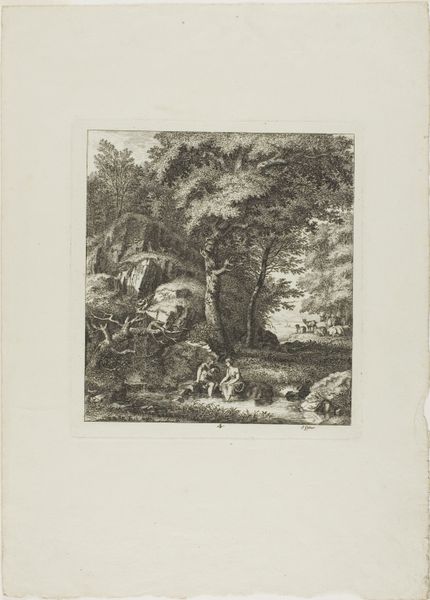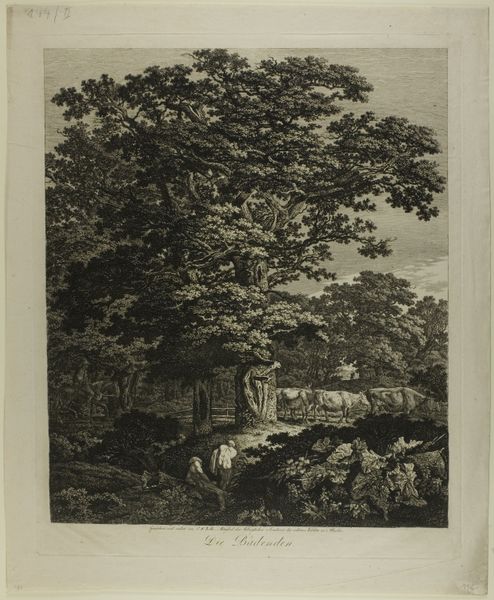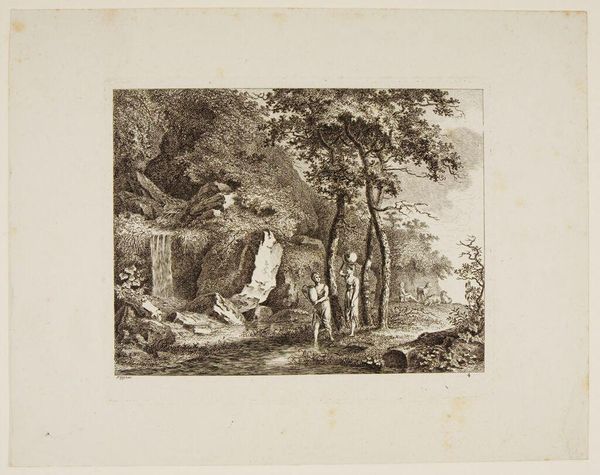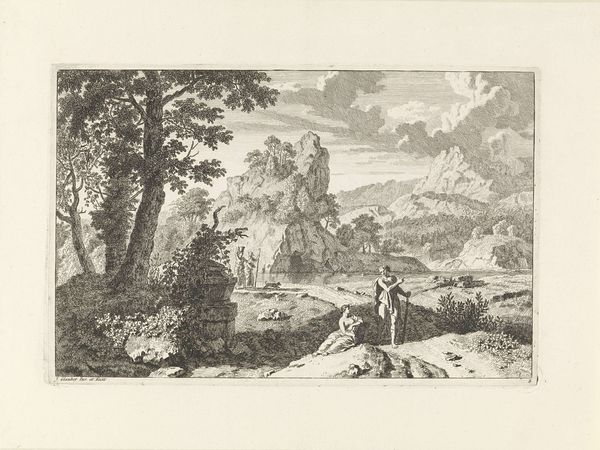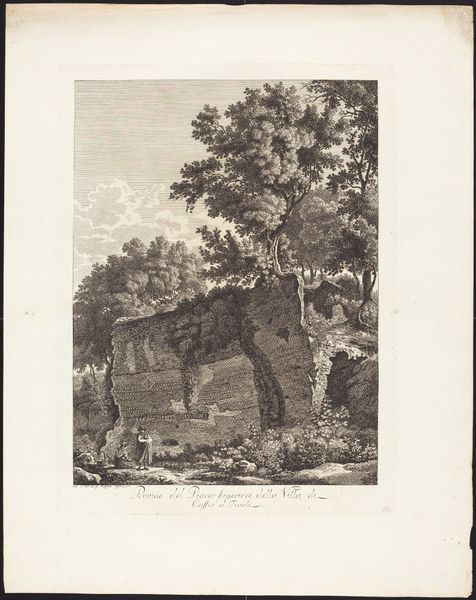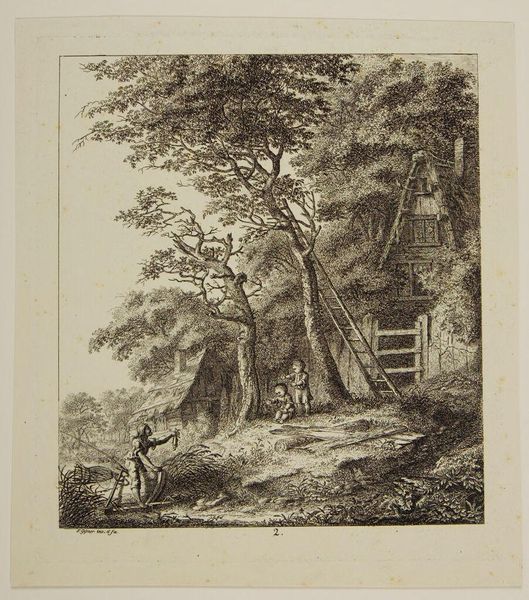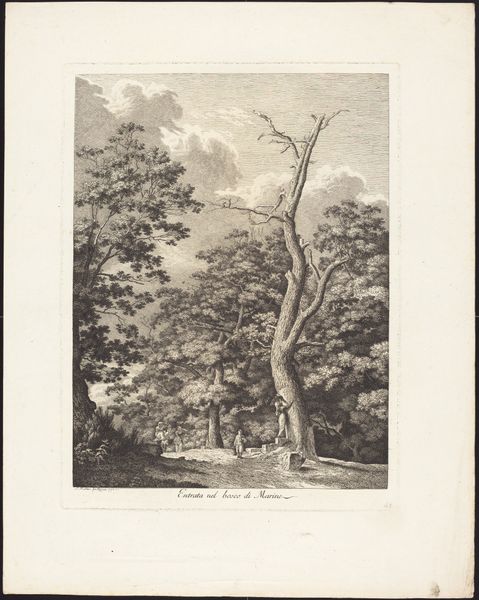
Fishermen with Children, plate two from Paysages Dédiés à M. Warelet 1764
0:00
0:00
Dimensions: 212 × 189 mm (plate); 389 × 276 mm (sheet)
Copyright: Public Domain
Curator: Here we have "Fishermen with Children, plate two from Paysages Dédiés à M. Warelet," created in 1764 by Salomon Gessner. It's an etching, a print on paper, and resides here at the Art Institute of Chicago. What is your first impression? Editor: It strikes me as incredibly serene, almost dreamlike. The textures are very soft, especially given the medium, creating a gently receding space. Curator: The composition is key to this tranquility. The diagonal created by the fisherman to the children creates a sense of movement and counterbalanced by the stillness of the structure nestled in the trees. Editor: Symbolically, water is often tied to the unconscious and transformation. The fisherman and his daily activity suggest a conduit between the everyday and deeper, perhaps more spiritual, currents of life. Children watching suggest promise and that tradition or ways of life are being carried forward. Curator: Quite right. Romanticism in art valued sentiment, awe of nature, and focused on subjective emotional experiences. Looking at the structure to the right: Notice the lines, the textures; how Gessner's use of light defines and isolates the structural from its natural setting. How might this relate to the concept of sublime experience in the everyday? Editor: It seems that the structure of a doorway and ladder against foliage acts as both barrier and portal to new life phases. Its slightly overgrown, a place of refuge. Curator: I'm interested in how Gessner juxtaposes this naturalistic imagery, representing emotional openness with structural formalism. The formal arrangement against nature makes you think of life. Editor: Yes, it presents a contained world, secure within established boundaries. There's a story unfolding beyond the immediate action—hints of tradition and the continuous cycle of life and growth, echoing the title which places landscape within a personalized dedication. Curator: Exactly. What I initially read as Romantic in sentiment shows greater classical design, a framework... Editor: …but the overarching mood evokes the quiet passing of time. Curator: A lovely insight. Thank you. Editor: The pleasure was mine.
Comments
No comments
Be the first to comment and join the conversation on the ultimate creative platform.
